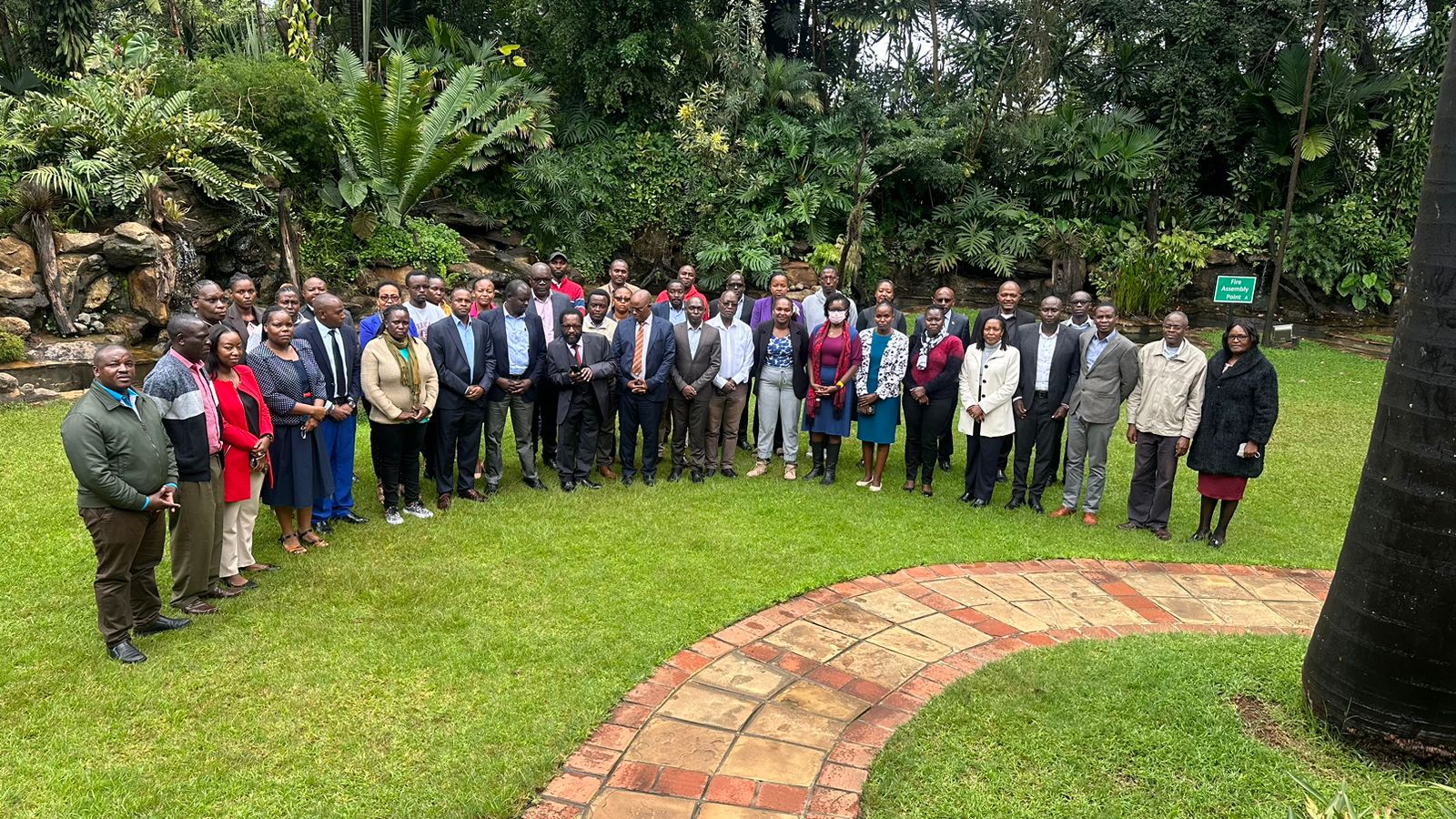The KADI project envisions the development of knowledge and co-production of climate services through an African observation and data research infrastructure. Within this framework, the project team in Kenya organised a workshop to bring together stakeholders of weather and climate information provided by the Kenya Meteorological Department for a discussion on how to understand user needs with the aim of co-producing better climate services.
Assessing weather and climate information use in Kenya
The impacts of climate change in Kenya cannot be ignored. Agriculture, a cornerstone of the economy, is particularly vulnerable with climate variability leading to reduced crop yields, food insecurity, and economic instability, especially in arid and semi-arid regions. Water resources are also under threat as changing rainfall patterns affect the availability of freshwater resources. Rising temperatures contribute to the spread of vector-borne diseases like malaria, impacting public health. Additionally, frequent floods and landslides damage infrastructure, disrupt transportation networks, and affect energy production. The Country’s demand for climate services is increasing and becoming more sophisticated, requiring improved technologies and approaches.
According to the Kenya National Bureau of Statistics Economic survey 2024, some key sectors contributing to the Kenyan economy are Agriculture, Construction, Energy, Environment and Natural resources, Health, ICT, Money, Banking and Finance, Transport, Education and training, Tourism, Governance and peace security, Social and Economic. These sectors are vulnerable to climate variance and providing climate information to support decision making will reduce the expected impact to these sectors and overall cushion the economy from adverse shocks. Representation from these sectors was viewed as a key to achieving the workshops objectives.
KADI and its KMD team organised a workshop to bring together various users of climate information services.
The workshop objectives were:
- Assess weather and climate use through a survey
- Identify gaps in weather and information use
- Document weather and climate services in Kenya
With a main mission to improve the uptake of national climate services, the workshop’s intent was also to develop coordination between actors and stakeholders along the country’s climate services value chain. The envisioned value chain includes observations networks & monitoring systems, user interface platforms, research, modelling and prediction, climate services information systems, and capacity building.
Participants for the workshop were drawn from a pool of frequent users of climate information (both forecast and ground data) from the National weather service, Kenya Meteorological Department. Organisation representatives from key sectors in the country were also present.
The feedback received formed a basis of evaluating the service provided, the gaps experienced and recommendations and suggestions to improve the products and services provided by KMD.
Summary of workshop findings
All the participants acknowledged the importance of climate information in their operations. In agriculture for example, weather forms a critical part of their planning from advising farmers on planting weeding to harvest and storage of food including crop insurance. For livestock farming weather assists in fodder availability, destock and input storage. Data as an input is crucial in producing climate information.
Review and recommendation for future expansions of the observation system
Sectors showed support in collaborating to improve and expand the national observation network and system. The energy sector confirmed hosting automatic weather stations at their plants and sites. An expansive station network provides critical data useful for producing climate information. Most participants were agreeable to hosting of observing stations and collaborations in sharing of data.
Requirements for environmental research infrastructure
All participants admitted to the changing climate being a concern in their operations. Most organizations are already setting up climate units to improve the take up of climate information provided by the National Meteorological Service. These units require openly available weather /climate data, capacity building, software and hardware support to enhance their sector specific research.
Emerging frontiers in climate information
- Investment in research on new technologies such as cloud seeding. What are the possibilities and impacts of such technology in the climate arena. There is also demand for accessible data and information on pollution and GHG.
- Climate projections and simulations into various sectors e.g. financial and health sectors. Such data should be available in a relatively ingestible format.
- Conversion of weather data into sector specific implications and use. E.g. Can rainfall data be incorporated into intensity. Sectors can support KMD in knowing what data they want.
- Research infrastructure involves both soft and hard infrastructure; appreciating social and cultural dimensions in the changing face of science.
Lessons learned
- Participants appreciated the hybrid format of the workshop. Those unable to travel to the venue could still participate.
- The Kenya Meteorological Department will coordinate a system that supports the sharing of information and feedback.
Appreciation for the success of the workshop goes to:
- TheKADI Project Consortium
- The Director of the Kenya Meteorological Department
- Kenya Meteorological Department KADI Team:
- Mr. Kennedy Thiongo
- Dr. Geoffrey Ogutu
- Ms. Patricia Nyinguro HSC
- Dr. Joyce Kimutai
- Ms. Christine Mahonga
- The key organisations who accepted the workshop invitation and sent their representatives.


